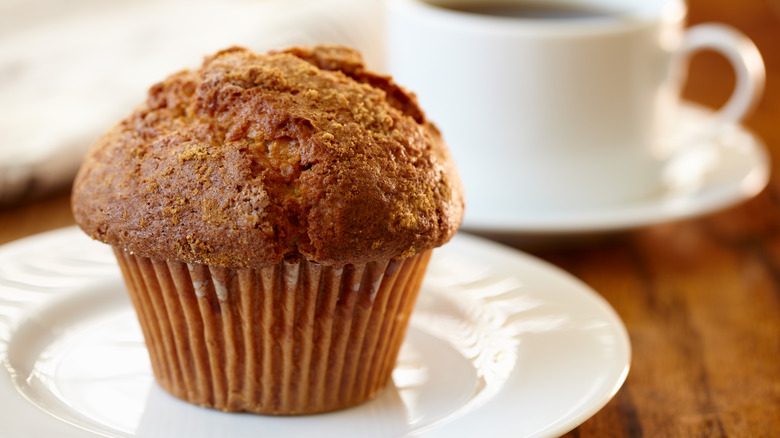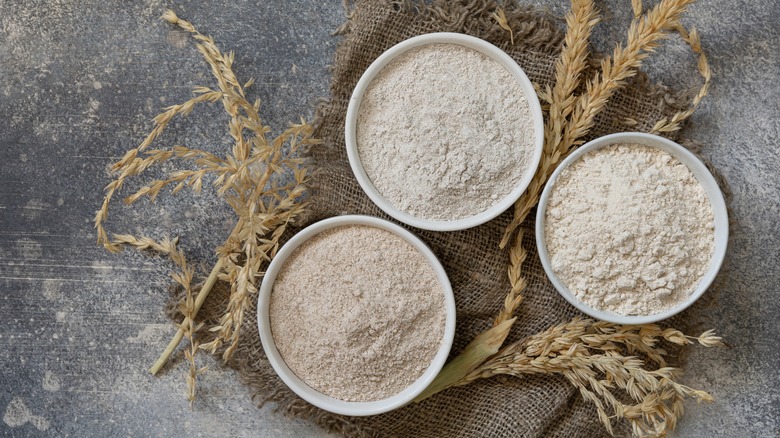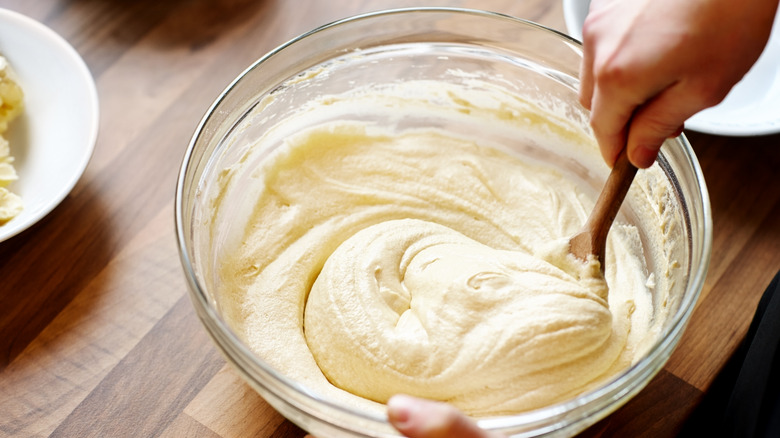The Secret To Cloud-Like, Fluffy Muffins Is In The Flour
Not all flour is built the same. Sure, all purpose flour is a workhorse that, by definition, generally works in all applications. But special flours exist for a reason: They bring different characteristics to your bakes. Just as artists have a variety of paintbrushes and contractors have various tools, bakers should have a selection of flours in their pantry so they can use the right one for the right purpose.
Muffins of all kinds bring happiness, but biting into a fluffy, cloud-like muffin is a special little mouthful of joy. To achieve that at home, you'll need to have cake flour on hand. You can use cake flour in place of all purpose flour in any muffin recipe; just add an extra two tablespoons of cake flour per cup of AP flour that the recipe calls for. Cake flour isn't as dense as all purpose flour, and you'll need to account for that when swapping flours.
Do you actually need cake flour to reach the fluffy muffin of your dreams? We've all used the cornstarch hack for fluffy baked goods, but yes — try baking with actual cake flour. It's OK to treat yourself! Consider this your sign to buy yourself a bouquet of flours.
What's the difference between AP and cake flour?
According to the Wheat Foods Council, there are 12 kinds of wheat flour. Some, like whole wheat and graham flour, use the whole kernel of wheat, while others, like semolina and durum, are coarsely ground endosperm. When it comes to white flour, there are five main options: cake, pastry, all purpose, bread, and high gluten.
The difference between them is in the protein content. Yes, we're talking gluten (which is a protein). The higher the protein content, the stronger the gluten bonds. According to research published by the National Library of Medicine, wheat has protein content ranging from 6.2% to 19.8% or higher. The stronger the gluten network in your bake, the chewier the bread — great for pizza dough and bagels, not so great for light and fluffy muffins.
Protein content can vary by brand, too. All purpose flour from King Arthur Flour touts an 11.7% protein content, while Gold Medal and Pillsbury AP flours range from 10% to 11%. Cake flour, on the other hand, has substantially less protein; Pillsbury's Softasilk cake flour has a 6.9% protein content, while King Arthur has 9%. If you can get your hands on a box of Softasilk, make a half batch of cake flour muffins alongside AP flour muffins and you'll notice the difference. It's the protein content — or, in this case, the lack of it — that keeps muffins fluffy.
Don't activate the gluten
There's a reason recipes for cake and cake-like bakes tell you to not overmix. That manual action plus water creates gluten bonds. That's why you knead bread. The more time the flour soaks in the liquid ingredients (think no-knead bread dough), the more kneading you do, or any combination of the two will create gluten you can pull a window out of when baking bread; the stretch that doesn't tear — great for baguettes, but exactly what you want to avoid for a cloud-like muffin. Once you switch to cake flour, make the most of it by making sure you're not letting the batter sit for too long before baking or overworking the batter when you're mixing in the dry ingredients.
Even though cake flour has a low protein content, it still has gluten; that's necessary to trap the CO₂ bubbles created by the baking powder in your recipe that makes the batter rise and your muffins fluffy. If you overmix the flour, it can make the muffins tough. Simply mixing until it's barely incorporated is enough. In the infamous words of Moira Rose, just fold it in.


